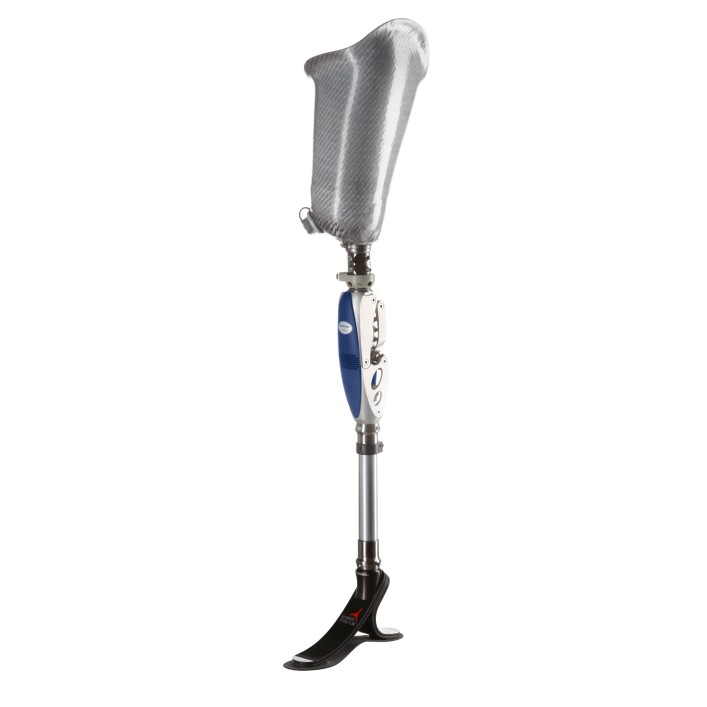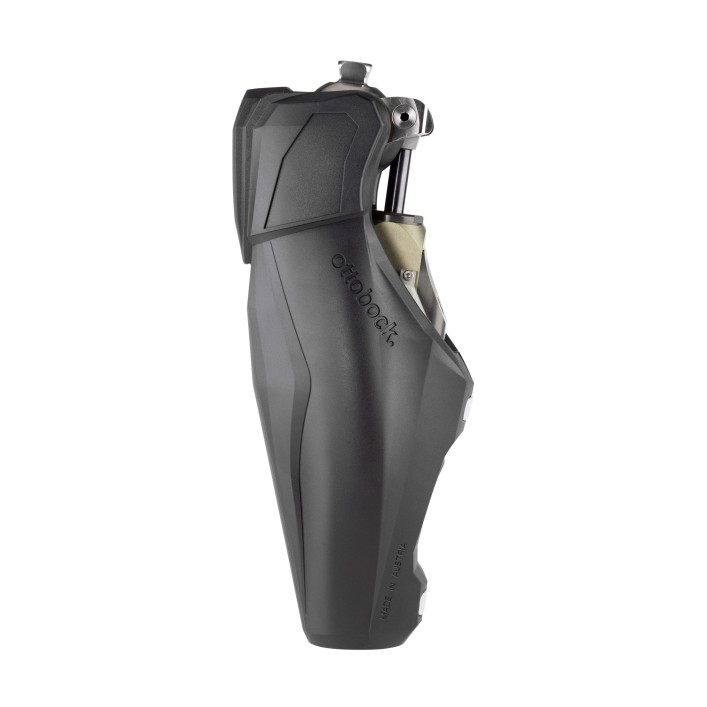Prosthetic knee joints
The natural human gait is divided into two phases: the swing phase, when the leg swings forward and the stance phase, when the leg is standing on the ground. Combining these phases and translating them into fluent movements with the help of an artificial joint makes it clear that the requirements for a prosthetic knee joint are highly specialised and extremely complex.
A secure stance phase needs to be combined with a dynamic swing phase in order to approach the diversity of movements in the human gait pattern as closely as possible. Some prosthetic knee joints are controlled by various functions. Your prosthetist will provide you with detailed information on the possibilities for your fitting in the course of extensive consultations.

Knee joint 3R60
A prosthesis system for users with a moderate activity level. Suitable for amputation levels from knee disarticulation to hemipelvectomy.

Knee joint 3R78
The 3R78 prosthetic knee joint offers security in the stance phase and harmonious movement patterns in addition to a high flexion angle.

Knee joint 3R80
Since the 3R80 knee joint makes it possible to walk on uneven ground in particular, it offers more freedom of movement and greater independence for prosthesis wearers.

Electronic knee joint 3E80
The 3E80 knee joint combines the advantages of rotary hydraulics with electronic monitoring and control.
Silicone cover for lower limb prostheses
Following an amputation, many prosthesis wearers want to recreate the appearance of their leg. This is made possible thanks to the strikingly natural appearance of silicone covers in custom skin colours.




